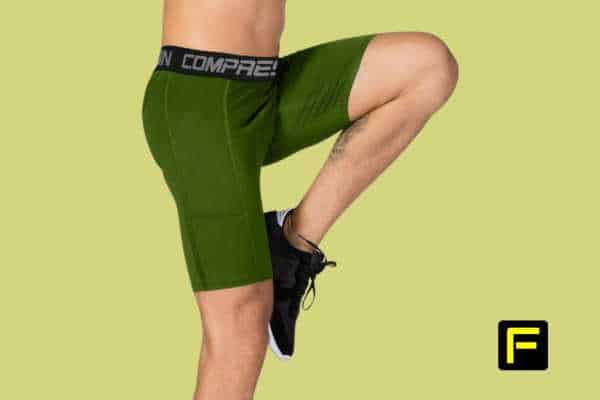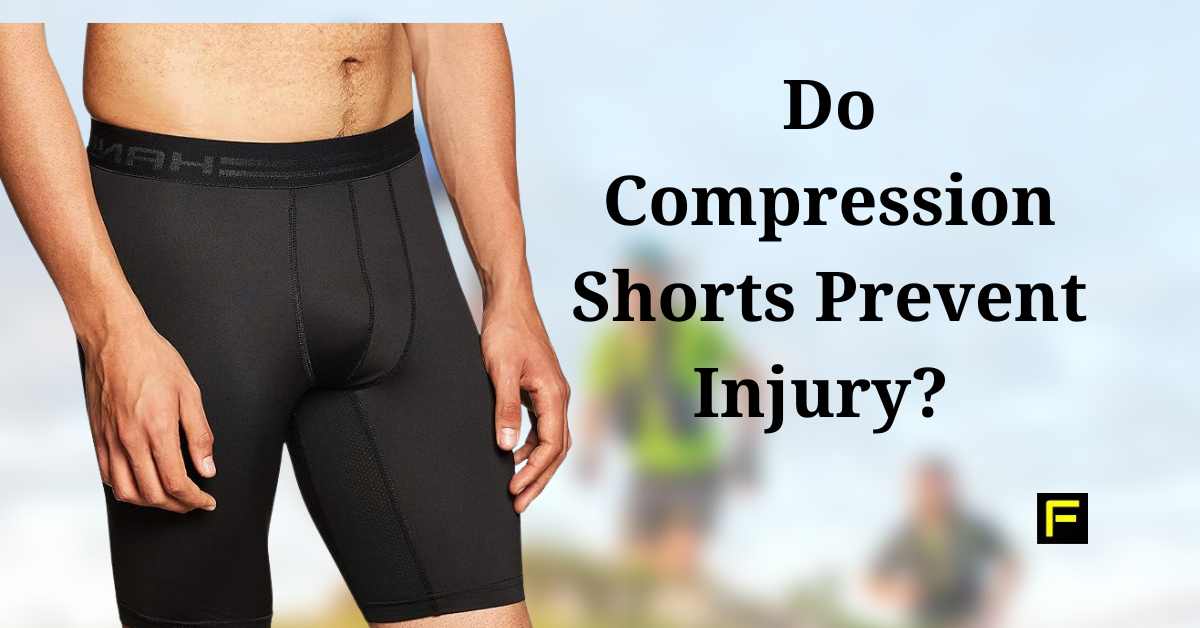Do Compression Shorts Prevent Injury? Compression shorts have gained popularity among fitness enthusiasts for their snug fit and the support they provide during physical activity. You may wonder if these form-fitting garments offer more than just comfort and whether they can play a role in injury prevention.
While some athletes tout the benefits of compression shorts for injury prevention, particularly for muscle strains, the scientific community still debates their efficacy in this regard.
Understanding how these shorts might contribute to reducing the likelihood of sports-related injuries involves looking at their design and intended use.

These garments are meant to apply pressure to the muscles of the thighs, which can potentially enhance blood circulation, reduce muscle movement, and support the groin area during activity.
This idea leads to the hypothesis that compression shorts can assist in preventing muscle strain and fatigue, which are common causes of injury when engaging in high-intensity or prolonged sports and activities.
Key Takeaways
- Compression shorts are designed to support muscles and may enhance blood circulation.
- Their potential to prevent injury is linked to reducing muscle movement and supporting the groin area.
- The scientific community is still evaluating the extent to which compression shorts can prevent injuries.
Do Compression Shorts Prevent Injury? Understanding Compression Shorts
In this section, you’ll get to grips with what compression shorts are, their historical roots, and the design principles and materials that make them beneficial.
What Are Compression Shorts?
Compression shorts are form-fitting garments that apply gentle pressure to the muscles on your thighs and lower torso. This skin-tight apparel is typically made from a blend of Lycra, spandex, and elastane, adhering to your body and potentially enhancing performance and recovery.
History of Compression Wear
The origins of compression wear can be traced back to therapeutic medical garments. Over time, athletes adopted the concept, finding that these garments could also improve blood circulation and support muscles during physical activity.
Design and Materials
Design: Compression shorts are engineered to offer support and increase blood flow. Their snug fit reduces muscle movement and potentially lessens the risk of injury.
Materials: A high-tech blend of materials like Lycra, spandex, and elastane provides elasticity and compressive properties. These shorts are breathable, moisture-wicking, and durable for athletic use.
Benefits of Compression Shorts
Compression shorts can be a valuable addition to your athletic gear, offering several benefits that could enhance your training and recovery. From boosting performance to supporting your muscles, here’s a closer look at what wearing compression shorts can do for you.
Enhanced Performance
Research suggests that compression shorts can improve your running performance by potentially reducing muscle pain and inflammation. This means less discomfort during runs, allowing you to push further and harder in your training sessions.
Improved Blood Circulation
The applied pressure of compression shorts is not just for show—it plays a role in aiding blood circulation. Better circulation means more oxygen to your muscles, which may lead to improved endurance and a quicker recovery after strenuous exercises.
Muscle Stabilization
Your muscles experience less movement and vibration when encased in the snug fit of compression shorts. This stabilization is crucial in potentially reducing the risk of injury and may help in keeping you in proper form throughout your activities.
Compression Shorts and Injury Prevention
These performance shorts are designed to provide support and improve blood circulation, reducing your risk of strains and fatigue. Here’s how wearing them might help prevent injuries during physical activities.
Reduction of Muscle Oscillation
When you’re active, your muscles move with each impact. Compression shorts can help reduce the movement, known as muscle oscillation, which often leads to muscle fatigue and strain. Keeping your muscles in place can decrease the likelihood of injury.
Support and Alignment
Proper support is crucial for muscle health. Wearing compression shorts provides extra support to your thighs and groin area, promoting better alignment of muscles and joints. This can prevent injuries caused by improper movement or overextension of muscles during intense activities.
Delayed Onset Muscle Soreness (DOMS) Prevention
After a rigorous workout, you may experience DOMS, which is muscle pain that develops hours later. Compression shorts can aid circulation, helping to clear out lactic acid and other byproducts of exercise. This can lead to a reduction in the severity and duration of DOMS, allowing you to recover more quickly and comfortably.
Scientific Evidence
When exploring the effectiveness of compression shorts in injury prevention, it’s crucial to consider both the research findings and expert opinions.
Several studies have investigated the role of compression garments like compression shorts in sports and rehabilitation.
A 2014 study published in the Journal of Sports Sciences found that wearing compression garments during and after exercise can aid in reducing muscle oscillation during activity, which might contribute to decreased muscle fatigue and soreness.
Meanwhile, the research highlighted in an article titled “Lower extremity compression garments use by athletes” indicates that athletes may experience perceived benefits from using compression shorts, particularly for injury prevention and as a recovery tool following exercise.
On the other hand, a comprehensive scoping review titled “Putting the Squeeze on Compression Garments: Current Evidence” suggests that while there are many potential benefits, the evidence varies in terms of compression garments’ effectiveness for injury prevention, urging caution in interpreting these findings definitively.
Health professionals and sports experts often endorse the use of compression shorts based on both clinical experience and observation of athletes’ performance and recovery.
For instance, a sports therapist may advise wearing compression shorts to provide supportive pressure that can help stabilize the muscles and reduce the risk of strains.
Additionally, those specializing in sports medicine might note that these garments potentially improve blood flow and reduce lactic acid build-up, factors that could influence injury prevention.
However, experts universally emphasize that while compression shorts can be a useful addition to an athlete’s toolkit, they should not replace foundational injury prevention strategies like proper warm-ups, stretching, and strength training.
Guidelines for Wearing Compression Shorts
Optimal use of compression shorts can contribute to injury prevention and enhanced athletic performance. Here’s how you can make the most out of them:
Proper Fitting
Compression shorts should be snug but not excessively tight. They’re designed to support your muscles without constricting blood flow.
The ideal fit will contour to your body, reducing muscle oscillation and therefore decreasing the energy wasted during motion. If you can’t move freely or you experience tingling, the shorts may be too tight.
Duration and Timing
Wear your compression shorts during exercise and for a short period afterward for recovery purposes.
While time frames vary depending on the intensity of your workout, wearing them for too long post-exercise is unnecessary and not advised. A good rule is to wear them for the duration of your workout and up to two hours post-exercise.
Maintenance and Care
To maintain the compressive quality, launder your shorts with care.
Avoid high temperatures when washing and drying as heat can degrade the elastic fibers. It’s recommended to wash them in cold water and air dry. Frequent replacement is also key; replace your shorts when they no longer provide the desired level of compression.
Limitations and Considerations
In evaluating the role of compression shorts in preventing injury, it’s important to consider not just the potential benefits but also the limitations and various factors that could impact their effectiveness.
Potential Discomfort
While compression shorts are designed to support your muscles, they must be the correct size to avoid potential discomfort.
Wearing compression shorts that are too tight can cause excessive pressure, leading to discomfort or even circulation issues. On the other hand, if they’re too loose, you won’t get the intended benefits.
Overreliance Risks
It’s crucial to remember that compression shorts are not a substitute for proper training and conditioning. Relying too heavily on them may give you a false sense of security.
It’s argued that the support to muscles and prevention of injury attributed to compression shorts should complement, not replace, conditioning exercises.
Cost-Benefit Analysis
Consider the cost of compression shorts against the potential benefits.
While some studies suggest they can aid in recovery and performance, determine if the price aligns with the level of injury prevention they offer for your specific activities. Keep in mind that higher-priced options don’t always equate to better injury prevention.
Sports and Activities
When you choose to wear compression shorts, it’s important to consider the specific sport or activity you’re engaging in. The potential benefits of wearing compression garments vary across different types of physical activities, from solo sports like running to team-oriented games such as soccer.
Running
In running, your muscles are subject to continuous impact, which can lead to fatigue. Compression shorts are believed to reduce muscle oscillation and impact force, which may, in turn, decrease the risk of overuse injuries. They’re also used to support the thigh muscles, which could potentially reduce symptoms from existing injuries.
Cycling
As a cyclist, you often maintain a static posture for long periods, and this can strain certain muscle groups. Compression wear can aid in muscle stabilization and ensure your body temperature is regulated. It’s thought that this can help in reducing muscle soreness and improve recovery time after your cycling sessions.
Team Sports
Team sports like basketball, soccer, or rugby require bursts of speed and quick changes of direction.
Wearing compression shorts may help in supporting your joints during these movements. Moreover, they can provide a compressive effect that contributes to proprioceptive feedback.
This feedback may allow you to move more efficiently and effectively on the field or court.
Frequently Asked Questions
In this section, you’ll find specific information regarding the use of compression shorts and their role in injury prevention for athletes. We’ll explore common concerns and provide clarity on wearing compression shorts effectively.
How can wearing compression shorts benefit athletes in preventing injuries?
Compression shorts support your muscles and may improve blood circulation, which can lead to reduced muscle fatigue and strain.
This support might also help in aligning muscle tissue and decreasing the amount of muscle vibration. These effects can potentially reduce soreness and the risk of injury during athletic activities.
What are the potential risks of using compression shorts during sports activities?
If compression shorts are worn too tightly or are ill-fitting, they could potentially hinder circulation rather than improve it. This may lead to discomfort or even venous thrombosis in extreme cases.
It’s essential to choose the right size to avoid any constriction or unnecessary pressure on the body.
Should compression shorts be worn tightly for injury prevention, and how tight is ideal?
Compression shorts should be snug, yet comfortable. They’re designed to offer compression without restricting movement or blood flow.
The ideal fit will securely contour to your body without digging into your skin or leaving indentations.
Could wearing compression shorts all day have any negative effects on the body?
Extended wear of compression shorts, especially if too tight, may lead to skin irritation or chafing. Continuous tightness over a prolonged period can also cause discomfort or circulatory problems, so it’s best to limit wear to when you are most active.
Are there specific benefits of compression shorts for basketball players regarding injury prevention?
For basketball players, compression shorts can provide benefits like increased proprioception, support to the thigh muscles, and possibly reduced risk of groin injuries.
The snug fit and support offer stability during the high-intensity movements typical in basketball.
What is the recommended way to wear compression shorts to maximize safety and effectiveness?
To maximize safety and effectiveness, ensure your compression shorts are the correct size. Also, follow the manufacturer’s guidelines for putting them on.
Compression should be uniform without any twisting of the material. The waistband should sit comfortably without slipping or digging into the skin.

Rick Huey is a fitness writer who has dedicated his life to living an active lifestyle. With more than 30 years of experience in the fitness industry, Rick is a respected contributor for FitFab50.com, where he shares his wealth of knowledge with a wide audience. His dedication to promoting the benefits of living an active lifestyle has inspired many people to pursue their own fitness journeys with enthusiasm and dedication.
